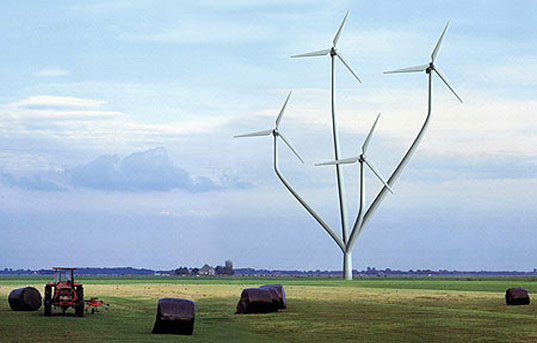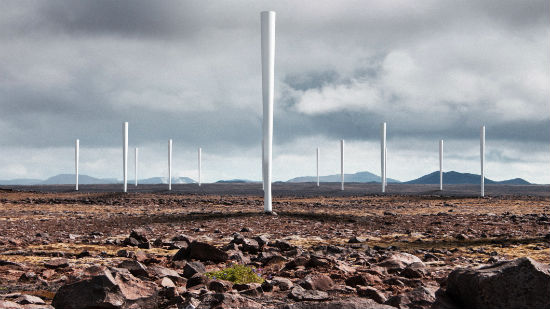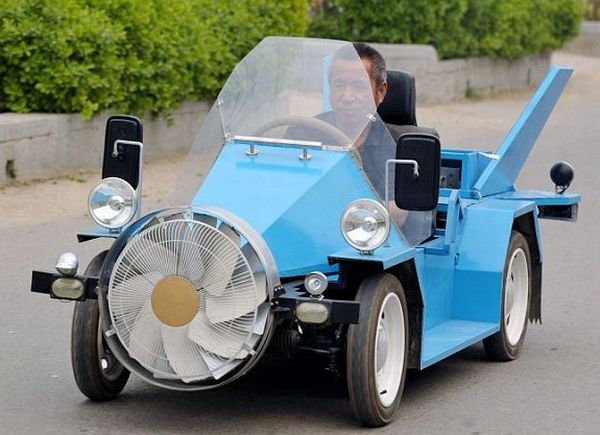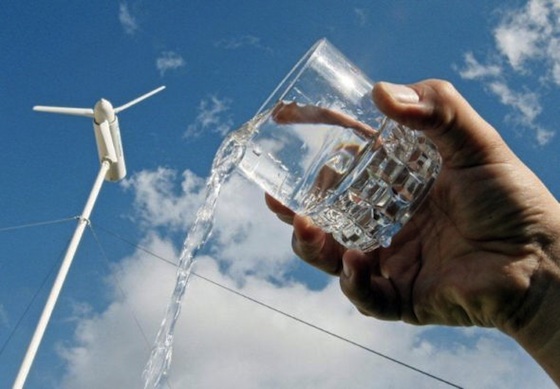
Windmills were used in the past for pumping water through primitive irrigation systems or used to grind grain in all traditional farms around the world. Mankind has always used wind energy for many years.
The wind turned large “sails” which were connected by a long vertical shaft which was attached to a grinding machine or to a wheel that turned and drew water from a well. Today’s turbines – can use the wind energy that manufactures electric power.
Windmill electricity turbines, unlike the machines of old, are mounted on very tall towers at 100 feet (30 meters) or more above ground, in order to capture the most wind energy available and take the advantage of the faster and less turbulent wind. Turbines catch the wind’s energy with their propeller-like blades, two or three, mounted on a shaft to form a rotor.
A blade acts as much as like an airplane wing. When the wind blows, a pocket of low-pressure air is formed on the downwind side of the blade and it pulls the blade toward, causing the rotor to turn. This is called lift. The force of the lift is actually much stronger than the wind’s force against the front side of the blade, which is called drag. The combination of lift and drag causes the rotor to spin like a propeller, and the turning shaft spins a generator to make power.
The main problem of the wind power generator is that when the wind stops, the generator and therefore the electric power production are stopped. Electric power cannot be produced and stored for consumption later. Therefore, wind power can only be counted on mostly when the wind is blowing at optimal speeds and only in locations where the prevailing winds are such that it makes economic sense to build these power plants and this may not be when and where the power is needed.
From the mid 1970s through the mid 1980s the United States government worked with industry to advance the technology of Windmills for Electricity and enable large commercial wind turbines. This effort was led by NASA at the Lewis Research Center in Cleveland, Ohio and was an extraordinarily successful government research and development activity. With funding from the National Science Foundation and later from the Department of Energy (DOE), a total of 13 experimental wind turbines were put into operation including four major wind turbine designs.
The large Windmills for Electricity developed under this effort several world records for diameter and power output. The Mod-2 wind turbine cluster produced a total of 7.5 megawatt of power in 1981. In 1987, the Mod-5B was the largest single wind turbine operating in the world with a rotor diameter of nearly 100 meters and a rated power of 3.2 megawatts. It demonstrated an availability of 95 percent, an unparalleled level for a new first-unit wind turbine. The Mod-5B had the first large-scale variable speed drive train and a sectioned, two-blade rotor that enabled easy transport of the blades.
Later, in the 1980s, California provided tax rebates, which funded the first major use of wind power for electricity, on ecologically harmless to Windmills for Electricity. They gathered in large wind parks such as at Altamont Pass would be considered small and un-economic by modern wind power development standards.
In the 1990s, because aesthetics and durability became more important, turbines were placed atop steel or reinforced concrete towers. Small generators are connected to the tower on the ground, and then the tower is raised into position. Larger generators are hoisted into position atop the tower and there is a ladder or staircase inside the tower to allow technicians to reach and maintain the generator.
Originally Windmills for Electricity were built right next to where their power was needed. With the availability of long distance electric power transmission, wind generators are now often on wind farms in windy locations and huge ones are being built offshore, sometimes transmitting power back to land using high voltage submarine cable. Since wind turbines are a renewable means of generating electricity, they are being widely deployed, but their cost is often subsidized by taxpayers, either directly or through renewable energy credits. Much depends on the cost of alternative sources of electricity. Wind generator cost per unit power has been decreasing by about four percent per year.
The largest wind turbines can generate up to 6MW of power (for comparison a modern fossil fuel power plant generates between 500 and 1,300MW).



